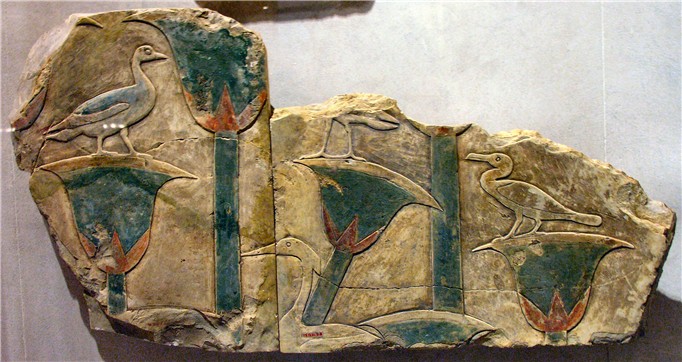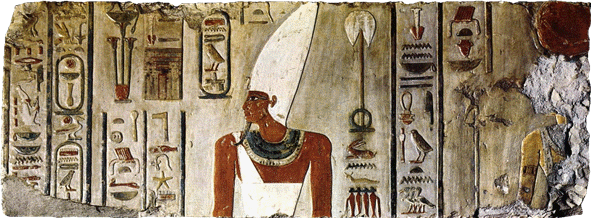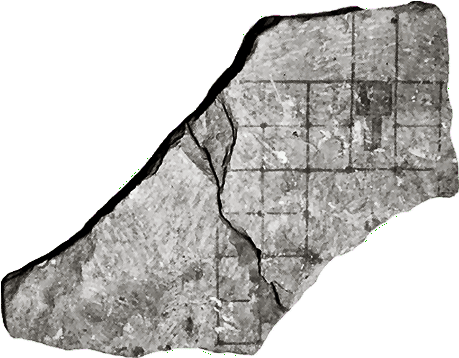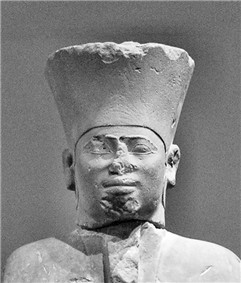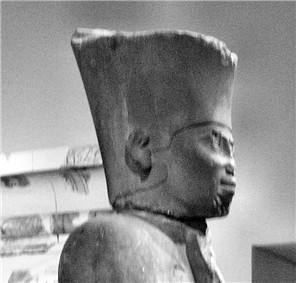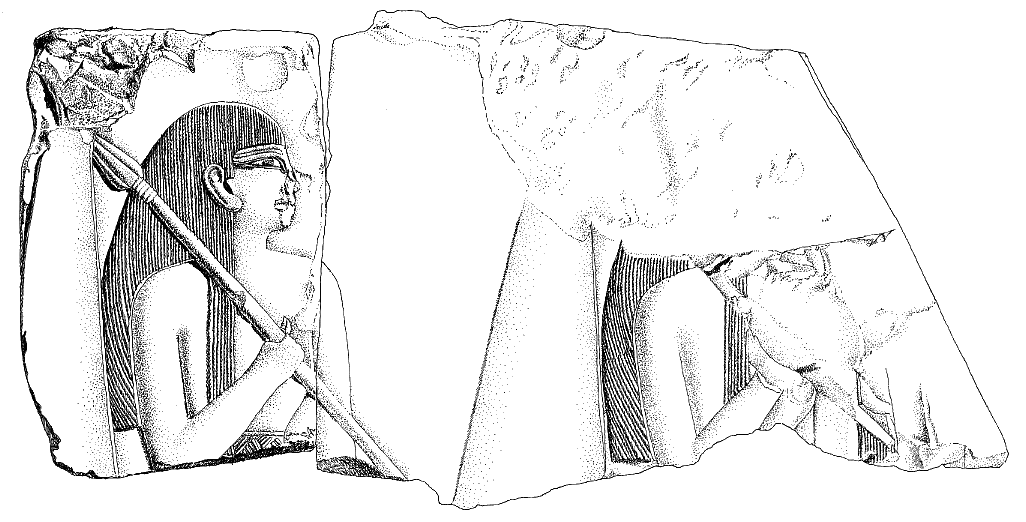|
Metropolitan Museum of Art |
||
|
last update: 03.08.2009 |
||
|
Da Winlock im Auftrag des
Metropolitan Museum of Art
, New York grub, hat das Museum
eine große Sammlung von Objekten aus dem Totentempel Mentuhotep
Nebhepetres in Deir el-Bahri. |
|
|
Inv. Nr.: 06.1231.3 (Geschenk des Egypt Exploration Fund 1906)
Herkunft: Deir el-Bahri, Totentempel Mentuhotep Nebhepetre Material: Kalkstein, bemalt Höhe: cm; Breite: cm |
|
| Farbiges Relief aus der Säulenhalle des Tempels. | |
|
|
|
|
Foto: Arnulf Schlüter 2006 |
|
| Literatur: | |
| Rita E. Freed: Relief Style of the Nebhepetre Montuhotep Funerary Temple Complex, in: Elizabeth Goring et al.: Chief of Seers, London 1997 p. 163 fig. 16 | |
|
Inv. Nr.: 07.230.2 Herkunft: Deir el-Bahri, Totentempel Mentuhotep Nebhepetre Material: Kalkstein, bemalt Höhe: 36 cm; Breite: 98 cm |
|
| Aus der Naville-Grabung von 1907. Der Block ist an der Rückseite gesägt (Arnold, Mentuhotep II, S. 42). Bei einem Konservierungsversuch mit einer gelblich glänzenden Lackübermalung wurden die Farben des Blockes leicht verändert. | |
|
|
|
|
Woldering Tf. XIII |
|
| Literatur: | |
|
Irmgard
Woldering: Götter und Pharaonen. Die Kultur im Wandel der
Geschichte; Fribourg 1967 William C. Hayes: The Scepter of Egypt. A Background of the Egyptian Antiquities in The Metropolitan Museum of Art. Part I: From the Earliest Times to the End of the Middle Kingdom. New York 1953, p. 158 fig. 94 Édouard Naville: The XIth [eleventh] dynasty temple at Deir el-Bahari. Bde I.-III., London 1907-1913, Part II, pl. Vc |
|
|
Inv. Nr.: 22.3.30 Herkunft: Deir el-Bahri, Totentempel Mentuhotep Nebhepetre Material: Sandstein, bemalt Höhe: ca. 30,5 cm; Breite: ca. 42 cm; Tiefe: 3-4 cm |
|
| Ostrakon in zwei Teilen, Gefunden in Naville's Dump. Wohl eine Architektenzeichnung eines Teiles des Tempels. | |
|
|
|
|
Arnold, Mentuhotep Notes, Tf. 15b |
|
| Literatur: | |
|
Dieter Arnold: The Temple of Mentuhotep at Deir el-Bahari. From the Notes
of Herbert Winlock. New York 1979, p. 23
Sommers Clarke - Reginald Engelbach: Ancient Egyptian Masonry, London 1930, p 57ff und fig. 59 Reginand Engelbach: An architect's project from Thebes, ASAE 27/1927, p. 72-75 Herbert E. Winlock: The Egyptian Expedition 1921 - 1922, in: BMMA II 17/1922, p. 26-27 |
|
|
Inv. Nr.: 23.3.29 Herkunft: Deir el-Bahri, Vorhof des Totentempel Mentuhotep Nebhepetres Material: Sandstein, bemalt Höhe: |
|
| Kopf einer Standfigur aus dem Vorhof des Mentuhotep Nebhepetre Tempels in Deir el-Bahri. Die Königsfigur trug die Rote Krone. Der Kopf gehört nicht auf die in der Ausstellung montierten Reste einer Standfigur (Arnold, p. 46). | |
|
|
|
|
Fotos: Arnulf Schlüter 2006 |
|
|
Der Kopf stammt aus der Grabung des Metropolitan Museums of Art 1921-22. |
|
| Literatur: | |
|
Janine Bourriau: Pharaohs and Mortals. Egyptian Art in the Middle Kingdom;
Cambridge 1988 p. 19 Dieter Arnold: The Temple of Mentuhotep at Deir el-Bahari. From the Notes of Herbert Winlock. New York 1979, p. 46ff Cyril Aldred: Some Royal Portraits of the Middle Kingdom in Ancient Egypt; Metropolitan Museum Journal 3/1970 p. 27-50 |
|
|
Inv. Nr.: 26.3.353S Herkunft: Deir el-Bahri, Grab der Neferu, TT 319 Material: Kalkstein, bemalt Höhe: cm; Breite: cm; |
|
| Fragment einer Sonnenschirmträgerin. Das Linke befindet sich in Yale, das Rechte im Metropolitan Museum. Insgesamt bestand die Szene aus einer Reihe von zehn Frauen und einem Mann. | |
|
|
|
|
Ancient Egyptian Art at Yale, No. 26 |
|
| Literatur: | |
| Scott, Gerry D. III: Ancient Egyptian Art at Yale, New Haven 2006 | |
